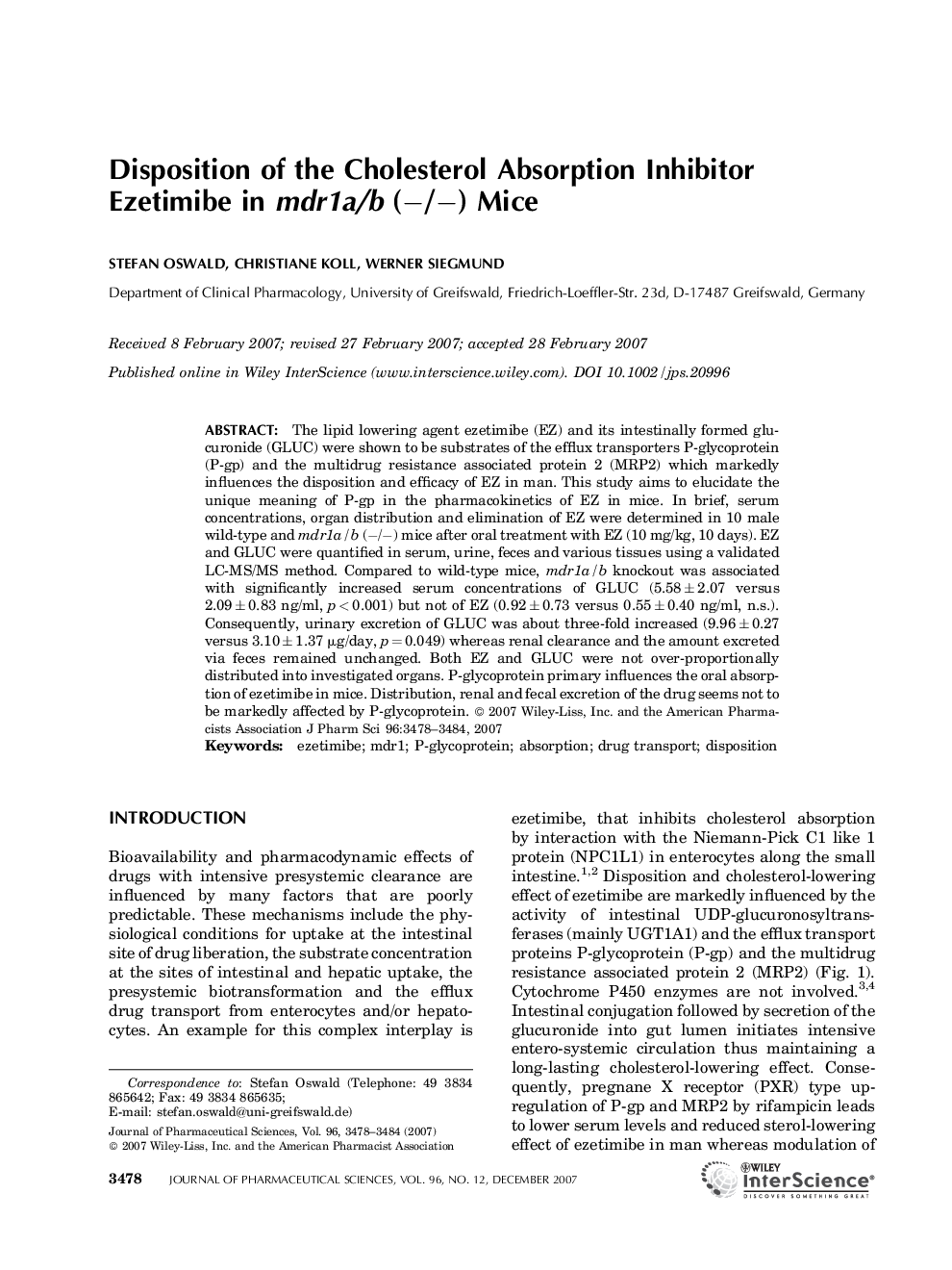| Article ID | Journal | Published Year | Pages | File Type |
|---|---|---|---|---|
| 2487645 | Journal of Pharmaceutical Sciences | 2007 | 7 Pages |
Abstract
The lipid lowering agent ezetimibe (EZ) and its intestinally formed glucuronide (GLUC) were shown to be substrates of the efflux transporters Pâglycoprotein (Pâgp) and the multidrug resistance associated protein 2 (MRP2) which markedly influences the disposition and efficacy of EZ in man. This study aims to elucidate the unique meaning of Pâgp in the pharmacokinetics of EZ in mice. In brief, serum concentrations, organ distribution and elimination of EZ were determined in 10 male wildâtype and mdr1a/b (â/â) mice after oral treatment with EZ (10 mg/kg, 10 days). EZ and GLUC were quantified in serum, urine, feces and various tissues using a validated LCâMS/MS method. Compared to wildâtype mice, mdr1a/b knockout was associated with significantly increased serum concentrations of GLUC (5.58 ± 2.07 versus 2.09 ± 0.83 ng/ml, p < 0.001) but not of EZ (0.92 ± 0.73 versus 0.55 ± 0.40 ng/ml, n.s.). Consequently, urinary excretion of GLUC was about threeâfold increased (9.96 ± 0.27 versus 3.10 ± 1.37 µg/day, p = 0.049) whereas renal clearance and the amount excreted via feces remained unchanged. Both EZ and GLUC were not overâproportionally distributed into investigated organs. Pâglycoprotein primary influences the oral absorption of ezetimibe in mice. Distribution, renal and fecal excretion of the drug seems not to be markedly affected by Pâglycoprotein. © 2007 WileyâLiss, Inc. and the American Pharmacists Association J Pharm Sci 96: 3478-3484, 2007
Related Topics
Health Sciences
Pharmacology, Toxicology and Pharmaceutical Science
Drug Discovery
Authors
Stefan Oswald, Christiane Koll, Werner Siegmund,
